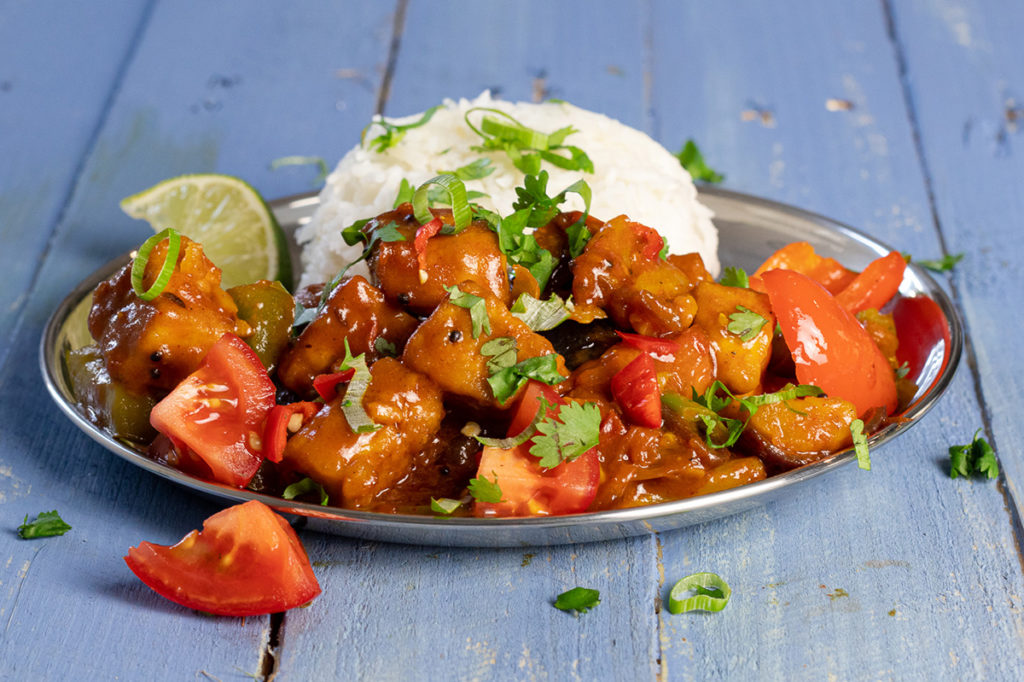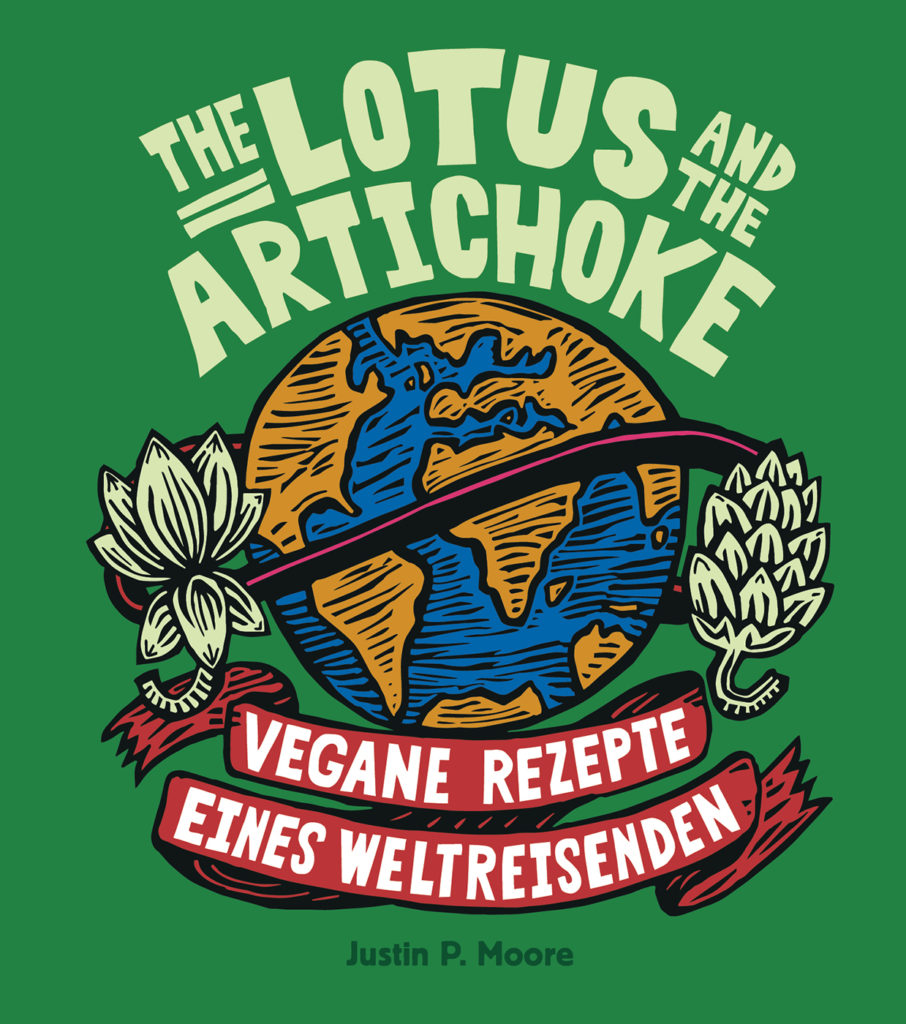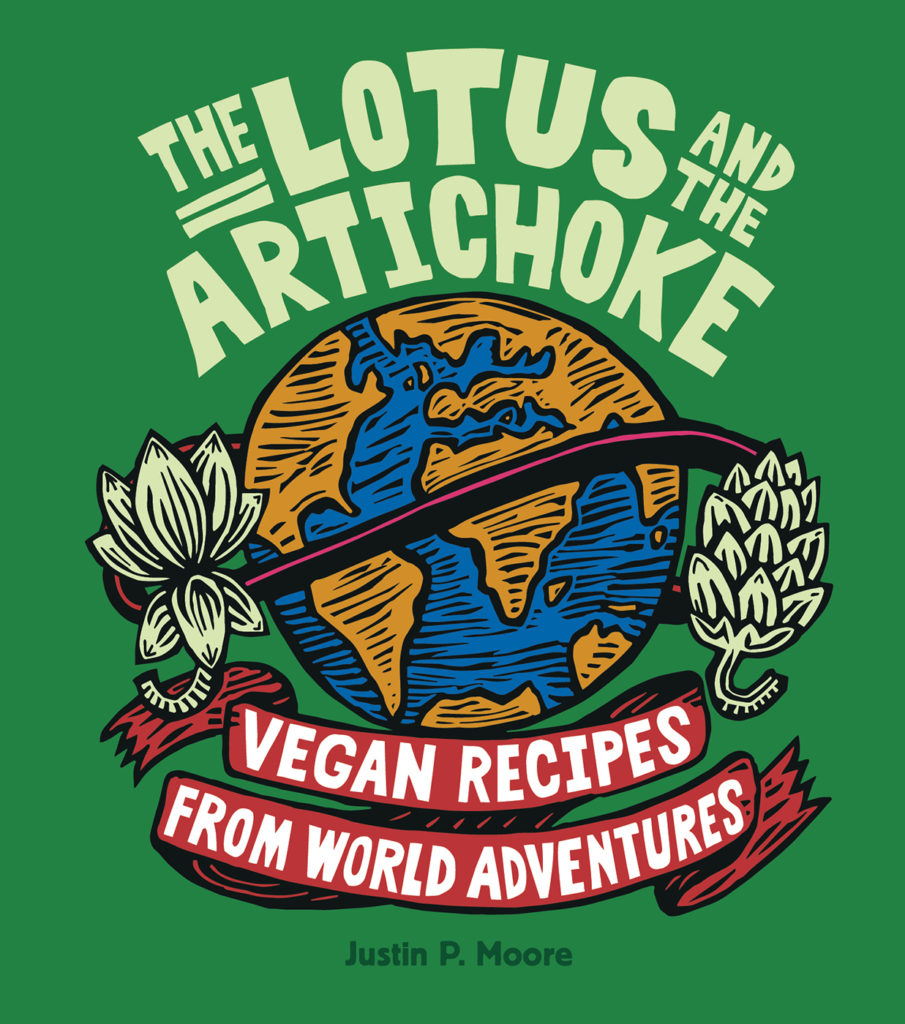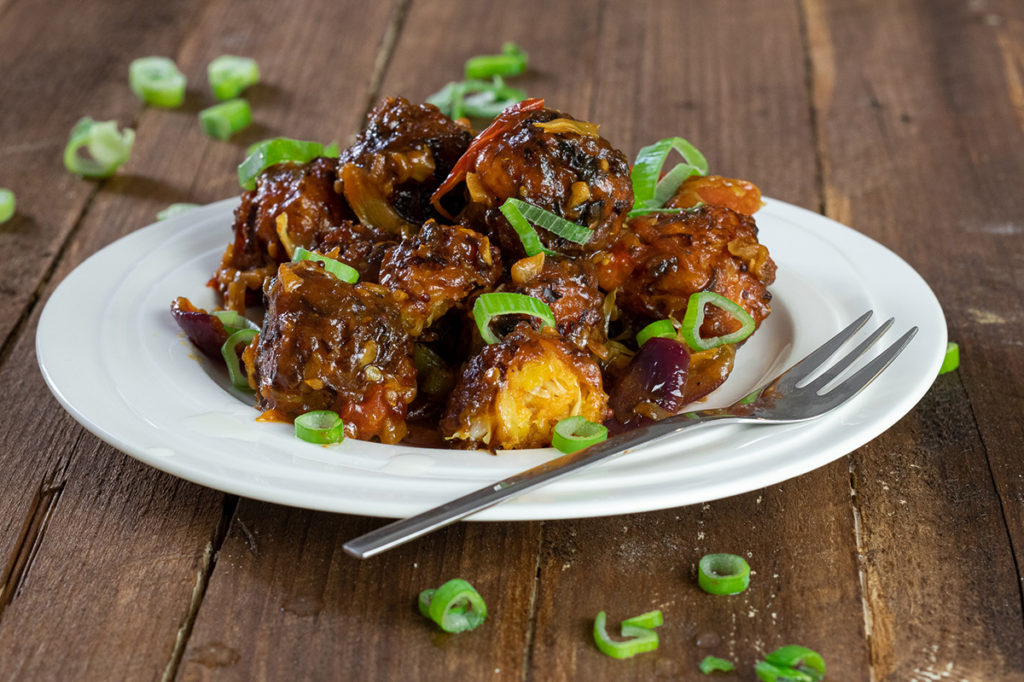
Chilli Tofu Paneer (or Chilli Tofu) is another of my absolute favorite Indo-Chinese dishes, and one that I look for all the time in India. Most recently I was eating Chilly Tofu (as it was written on the menu) just about every day during an extended visit to Rishikesh — a few years back on my last tour of North India. There were two fantastic restaurants there that I ate at all the time, and this dish and Vegetable Manchurian were my go-to lunch or dinner. (Pretty sure I even had it for breakfast a few times, too!)
I’ve tried this dish all over the subcontinent, and it’s something I used to cook at home when I lived in Amravati, too. I still cook it regularly here in Berlin – and I’ve made it more than a few times for dinner parties and other events. Other unforgettable culinary experiences with Chilli Tofu were at a temple restaurant in Sri Lanka (they also made a spicy Chilli Kottu with sliced roti instead of tofu or paneer), at the legendary Hasty Tasty in Darjeeling, and from some grubby, but wonderful eatery in “downtown” Varkala.
This recipe is one that I’ve upgraded and improved for the new edition of my WORLD cookbook. The recipe first appeared in my original The Lotus and the Artichoke – Vegan Recipes from World Adventures cookbook back in 2012 (And in German in 2013).
Obviously you can swap out the vegetables and use broccoli or cauliflower, for example, instead of red and green peppers. Another fun variation is to swap in chopped potatoes for the tofu pieces, effectively making Chilli Potatoes, another Indo-Chinese dish you might find on the “Chinese” pages of many restaurant menus in India.
If you’re feeling bold… double the spices and use twice as much chopped garlic, ginger, and green chilies. You’ll want to tweak the salt, sugar, and lemon/lime juice amounts, too.
Chilli Tofu-Paneer goes great with some steamed rice, or you can eat it with flatbreads like naan and chapati/roti. Roll it up and make a wrap and it’s almost like a Kati Roll!
Chilli Tofu Paneer
Indo-Chinese sweet & sour tofu
serves 2 / time 45 min
Recipe from The Lotus and the Artichoke – WORLD 2.0
(Rezept auf Deutsch unten)
tofu paneer:
- 7 oz (200 g) tofu
- 2 Tbs lemon juice
- 1 Tbs soy sauce
- 2 Tbs nutritional yeast flakes or chickpea flour (besan)
- 2 Tbs corn starch
- 2–3 Tbs coconut oil or vegetable oil
- Cut tofu in slabs and wrap in a dish towel. Weight with a cutting board for 15–20 min to remove excess moisture. Unwrap and cut into triangles or cubes
- Combine lemon juice, soy sauce, nutritional yeast flakes (or chickpea flour), and corn starch in bowl.
Add tofu cubes, mix well, coat all pieces. - Heat oil in a small frying pan on medium high. Fry battered cubes in batches until evenly golden brown, turning regularly, 4–6 min. Remove, drain, set aside.
vegetables & sauce:
- 2 medium (150 g) tomatoes chopped
- 1/2 medium (90 g) red pepper chopped
- 1/2 medium (80 g) green pepper chopped
- 2/3 cup (100 g) fresh pineapple chopped
- 1 medium (120 g) onion chopped
- 2 cloves garlic finely chopped
- 1 in (3 cm) fresh ginger finely chopped
- 1–2 green chilies seeded, sliced
- 2–3 spring onions chopped, for garnish
- 2 Tbs vegetable oil
- 1/2 tsp black mustard seeds
- 1 tsp coriander ground
- 1/2 tsp black pepper ground
- 1 tsp paprika ground
- 1/4 tsp turmeric ground
- 1 Tbs lemon juice or 2 tsp rice vinegar
- 1 Tbs sugar
- 1/2 cup (120 ml) water
- 1 Tbs soy sauce
- 1 Tbs corn starch
- 1/2 tsp salt
- Heat oil in a large pan or wok on medium high heat. Add mustard seeds. After they start to pop
(20–30 sec), add chopped onion, garlic, ginger, green chilies, ground black pepper, coriander,
paprika, and turmeric. Fry while stirring until richly aromatic, 2–3 min. - Add chopped tomatoes, red and green peppers, pineapple, lemon juice (or rice vinegar), and sugar.
Stir-fry on medium heat until tomatoes fall apart and peppers and pineapple are scorched, 4–6 min. - Whisk water and soy sauce with corn starch in a bowl. Gradually pour mixture into sizzling vegetables while stirring. Stir in salt and cook, stirring constantly, until sauce thickens, 2–3 min.
- Stir in fried tofu cubes and coat them with sauce. Simmer on low heat, stirring regularly, another 2–3 min.
- Garnish with chopped spring onions and serve with rice.
Variations:
Vedic: Replace chopped onion and garlic with 1/4 tsp asafoetida (hing) and 1/2 tsp Garam Masala, followed by another chopped small tomato along with red and green peppers.

Chili Tofu Paneer
Indochinesischer pikanter süßsaurer Tofu
2 Portionen / Dauer 45 Min.
Rezept aus The Lotus and the Artichoke – WORLD 2.0
Tofu-Paneer:
- 200 g Tofu
- 2 EL Zitronensaft
- 1 EL Sojasoße
- 2 EL Hefeflocken oder Kichererbsenmehl (Besan)
- 2 EL Speisestärke
- 2–3 EL Kokos- oder Pflanzenöl
- Tofu in dicke Scheiben schneiden, in ein sauberes Geschirrtuch wickeln und 15 bis 20 Min. mit einem Schneidebrett beschweren, um überschüssige Flüssigkeit herauszupressen. Auswickeln und in Dreiecke
oder Würfel schneiden. - Zitronensaft, Sojasoße, Hefeflocken oder Kichererbsenmehl und Stärke in einer Rührschüssel verrühren. Tofuwürfel hinzufügen und mit der Mischung überziehen.
- Öl in einer kleinen Pfanne auf mittlerer Flamme erhitzen. Mit Teig überzogene Würfel in mehreren Durchgängen 4 bis 6 Min. gleichmäßig goldbraun braten, dabei regelmäßig wenden.
Aus der Pfanne nehmen, abtropfen lassen und beiseite stellen.
Gemüse & Soße:
- 2 mittelgroße (150 g) Tomaten gehackt
- 1/2 mittelgroße (90 g) rote Paprika gehackt
- 1/2 mittelgroße (80 g) grüne Paprika gehackt
- 100 g frische Ananas gehackt
- 1 mittelgroße (120 g) Zwiebel gehackt
- 2 Knoblauchzehen fein gehackt
- 3 cm frischer Ingwer fein gehackt
- 1–2 grüne Chilischoten geschnitten
- 2–3 Frühlingszwiebeln gehackt, zum Garnieren
- 2 EL Pflanzenöl
- 1/2 TL schwarze Senfsamen
- 1 TL Koriander gemahlen
- 1/2 TL schwarzer Pfeffer gemahlen
- 1 TL Paprikapulver
- 1/4 TL Kurkuma gemahlen
- 1 EL Zitronensaft oder 2 TL Reisessig
- 1 EL Zucker
- 1/2 Tasse (120 ml) Wasser
- 1 EL Sojasoße
- 1 EL Speisestärke
- 1/2 TL Salz
- Öl in einer großen Pfanne oder einem Wok auf mittlerer Flamme erhitzen. Senfsamen hineingeben.
Nach deren Aufplatzen (20 bis 30 Sek.) Zwiebel, Knoblauch, Ingwer, grüne Chilischoten, schwarzen Pfeffer, Koriander, Paprikapulver und Kurkuma hinzufügen und 2 bis 3 Min. unter Rühren anbraten,
bis es aromatisch duftet. - Tomaten, rote und grüne Paprika, Ananas, Zitronensaft oder Reisessig und Zucker einrühren.
4 bis 6 Min. braten, bis die Tomaten zerfallen und die Paprika und Ananas angeschmort sind. - Wasser, Sojasoße und Speisestärke in einer Schüssel verrühren. Flüssigkeit nach und nach unter das Gemüse rühren. Salz zugeben und 2 bis 3 Min. unter ständigem Rühren weiterköcheln, bis die Soße eindickt.
- Tofuwürfel zum Gemüse geben und mit der Soße überziehen. Auf niedriger Flamme 2 bis 3 weitere Min. unter Rühren köcheln.
- Mit Frühlingszwiebelringen garnieren und mit Reis servieren.
Variationen:
Vedisch: Zwiebel und Knoblauch mit 1/4 TL Asafoetida (Asant) und 1/2 TL Garam Masala ersetzen.
Zusätzlich dazu 1 weitere kleine gehackte Tomate mit der grünen und roten Paprika zugeben.



